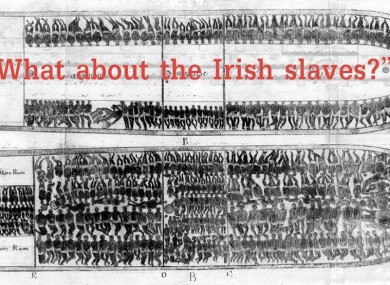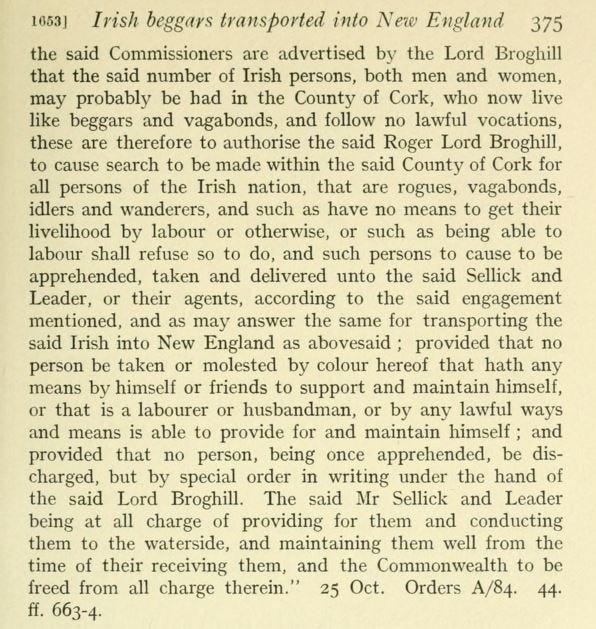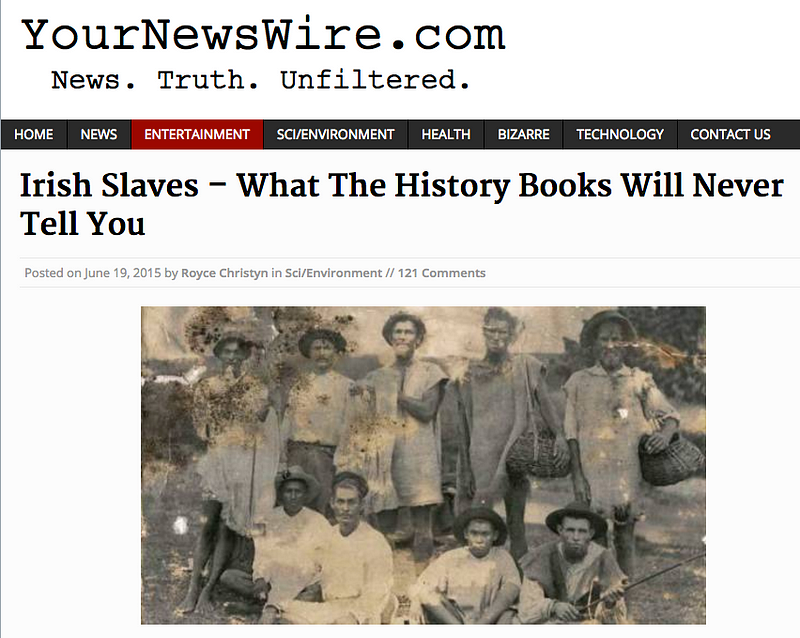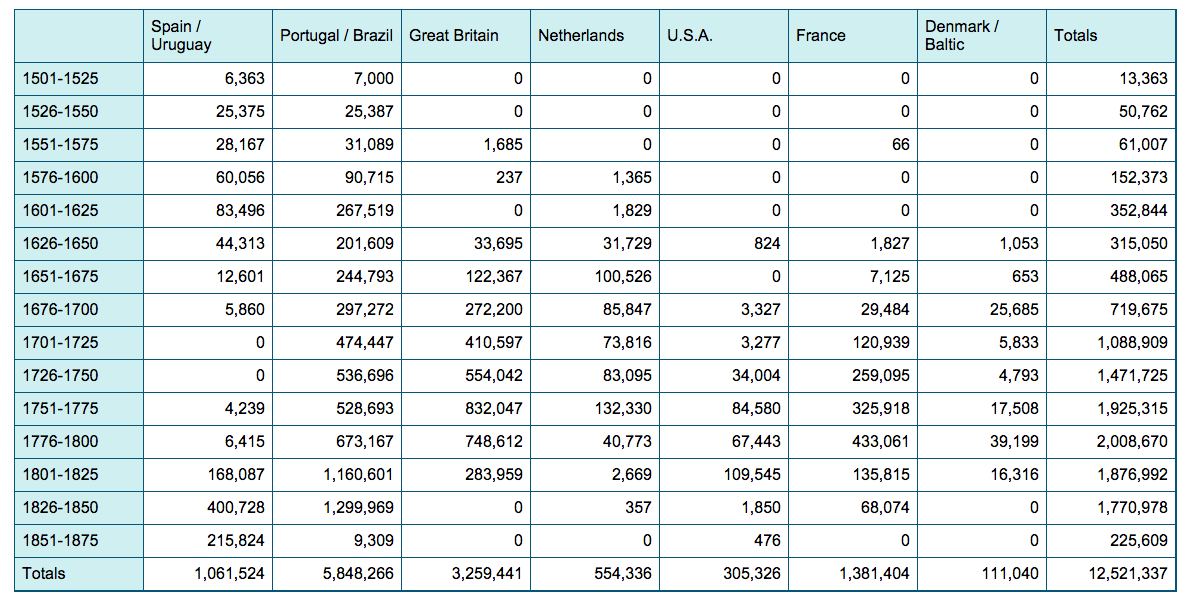England’s “Irish Slaves” Meme: The Numbers

Global Research Editor’s Note:
In 2008 (reposted in 2015), Global Research published a short article entitled The Irish Slave Trade: The Forgotten “White Slave”. This article which skimmed the surface of a complex historical process has been the object of critical debate, controversy and confusion. Several factual errors in the article have been identified.
In order to promote further discussion concerning the Irish Slave Trade, Global Research will be publishing several articles on the subject, largely with a view to providing a broader historical background.
The article below by Liam Hogan is published in response to The Irish Slave Trade – The Forgotten “White” Slaves By John Martin, March 17, 2015. Minor edits by Global Research.
Author’s Note: The numbers game is a depressing one and every life is significant and of equal importance. Unfortunately the “Irish slaves” meme exaggerates and fabricates to such an egregious extent that a basic corrective is necessary.
(This is part four of my series debunking/contextualising the meme. See Part One, Part Two, Part Three and Part Five)“The Irish Slave Trade” Globalresearch.ca article claims that
James I sold 30,000 Irish prisoners as slaves to the New World. His Proclamation of 1625 required Irish political prisoners be sent overseas and sold to English settlers in the West Indies. [edit by GR, James I]
This Proclamation of 1625 which supposedly stated that “Irish political prisoners” were to be sold as servants to English colonists in the New World does not appear to exist. Charles I did issue A proclamation for settling the Plantation of Virginia (13 May 1625) but it does not mention anything about transportation or banishment. There is a much earlier proclamation by James I (17 September 1603) which was For the Due and Speedy Execution of the Statue against Rogues, Vagabonds, Idle, and Dissolute Persons. This renewed an older Elizabethan law that criminalised repeated vagabondage and “idleness” in 1597. The Privy Council named “New-found Land, the East and West Indies, France, Germanie, and the Low-Countries, or any of them” as the location for banishment. These ideological attempts to “correct” poverty (through subjugation and forced labour) partly explain the disproportionately high level of forced transportations from Ireland to the American colonies in the wake of the Cromwellian war.
“From 1641 to 1652 [the] English [sold] 300,000 [Irish people] as slaves.”
To put this into context, the total migration from Ireland to the West Indies for the entire 17th century is estimated to have been around 50,000 people and the total migration from Ireland to British North America and the West Indies is estimated to have been circa 165,000 between 1630 and 1775. (See Bielenberg, The Irish Diaspora, p. 216)
If this is the case, where on earth is the meme getting the unequivocal and impossible 300,000 forced deportations from Ireland over a ten year period? This number being nearly double the estimated total migration from Ireland to the Americas over 145 years?
Cromwellian era forced deportations from Ireland to the British West Indies did not begin in earnest until May 1653 and the total number forcibly deported during the Cromwellian era is roughly estimated by scholars (Corish, Watson, Akenson, et al) to have been around 10-12,000 people.
The paucity of records ensures that we will never know the exact number. Kerby Miller (Emigrants and Exiles, 143), Robin Blackburn (The Making of New World Slavery, 247) and Matthew C. Reilly (“Poor Whites” of Barbados, 6) estimate that “several thousand” were banished. These estimates are educated guesses based on contemporary population figures for the islands, allowing for a high mortality rate, pre-existing Irish populations and concurrent voluntary emigration.The “300,000 Irish slaves” claim is a spectacular exaggeration.
There is no scholarship or even logic behind this number. It appears that the meme has taken the guesstimate on the blurb on the back cover of White Cargo (by Jordan and Walsh) and applied it to the Cromwellian era forced transportations from Ireland. Keep in mind that this appropriated guesstimate refers to all the indentured servants and convicts who were transplanted to the British American colonies from Britain and Ireland over a 200 year period.


During the 1650s, over 100,000 Irish children between the ages of 10 and 14 were taken from their parents and sold as slaves in the West Indies, Virginia and New England.
Another massively exaggerated claim which does harm to the historical record of the officially sanctioned transportations and illicit kidnapping that did occur. The most infamous case involved David Selleck, a prominent tobacco merchant from Boston, New England. On the 6 September 1653 a warrant was awarded to Selleck (after he had petitioned for it) to transport 400 Irish children into New England and Virginia. The transport ships were listed as the Goodfellow and the Providence.
These children were presumably earmarked by the Puritans as either orphans or from destitute families who (thanks in no small part to the brutal military tactics of the invading force) had no means to provide for themselves, as on the 11 October 1653 Alderman Tichborne was ordered by the council to draft an Act for transportation of poor Irish children to England and the plantations. What occurred was very different to this initial plan. Profit appears to have been the primary motive; concealed in this instance beneath the veneer of “public service.” The two ships were anchored in Kinsale and despite the initial warrant to transport children they instead sought out adolescents and adults.
…250 Irish women, above the age of 12 and under the age of 45, and also 300 men above the age of 12 and under the age of 50 years…
The specific age restrictions indicates that Selleck (and his partner Mr. Leader) wanted a “cargo” which would fetch a good price for them in the colonies. The authorisation granted was essentially the legalised kidnapping of the poor (25 Oct 1653)


The agreement between Dell and Symonds was for nine years of service. Welch and Downing were not party to (or consented to) these terms and they were under the impression that seven years was the standard term for English servants in Barbados. Symonds won the case and the court ordered Welch and Downing to work for nearly two more years before they could be free. Their testimonies along with other court depositions are invaluable evidence of the reprehensible methods used to fill some of these transport vessels.
Andrew Welch and William Downing
We were brought out of or owne Country, contrary to our owne wills & minds, & sold here unto Mr Symonds, by ye master of the Ship, Mr Dill, but what Agreement was made betweene Mr Symonds & ye Said master, was neuer Acted by our Consent or knowledge, yet notwithstanding we haue indeauored to do him ye best seruice wee Could these seuen Compleat yeeres.
John King
…Divers others were stollen in Ireland, by some of ye English soldiers, in ye night out of theyr beds & brought to Mr Dills ship, where the boate lay ready to receaue them, & in the way as they went, some others they tooke with them against their Consents, & brought them aboard ye said ship, where there were divers others of their Country men, weeping and Crying, because they were stollen from theyr frends..
John Downing
William Downing and Phillip Welch, with several of their countrymen, were taken up and stolen by the ship master or some one whom he hired. The Ship-master, George Dill, was fain to go away and leave his water and much of his provisions behind for fear the country would have taken them from him…[…]…he knew that he and three or four others of his townsmen were taken up by force; that he did not know the two parties in question, but they said in the ship that they were stolen and brought by force.
Such methods of kidnapping eventually attracted the attention of the Council who enacted a range of measures to inspect ships before they departed from Irish ports. One report (6 July 1655) warned the Commissioners that
…under the colour of some later orders from this Board for transporting rogues and vagrants to Barbados, several Irish and others are surreptitiously apprehended and forcibly put on board a ship in this harbour of Dublin, bound for that island, who are not comprehended as vagrants or idlers.
Cromwell’s policy of transportation of vagrants from Ireland was abandoned on 4 March 1657. It was abolished because it was being abused to such an extent by merchants and their agents. It is also interesting that these kidnappers did not discriminate between Irish or English victims. The cancellation order reads as follows
…having received many complaints of the abuse of some orders granted to several persons to carry away idle and vagabond persons to the West Indies, who… employ persons to delude and deceive poor people by false pretences, either by getting them aboard the ships or in other by-places into their power, and forcing them away, the person so employed having so much a-piece for they so delude, and for the money’s sake have enticed and forced women from their husbands and children from their parents, who maintained them at school, and that they have not only dealt so with the Irish but also with the English [the Council now] do think fit and order that all Orders, granted to any person whatsoever (being now in force) to take up and carry idle and vagabond persons as aforesaid, be henceforth made null and void.
In this decade, 52,000 Irish (mostly women and children) were sold to Barbados and Virginia.
Sigh. Where did the other 248,000 go?
This exaggerated figure of around 52,000 has lineage. It can be traced back to Sean O’Callaghan’s To Hell or Barbados. O’Callaghan incorrectly attributes this number to Aubrey Gwynn. But he either misread Gwynn or has deliberately mislead the reader because Gwynn took a guess at 16,000 sent to the West Indies and his total estimate of 50,000 includes the 34,000 that left Ireland for the continent. Despite this basic error the figure of 50,000 has remained on the blurb of this book since its publication over fifteen years ago.
Another 30,000 Irish men and women were also transported and sold to the highest bidder.
A random 30,000 people fabricated to make it seem like the authors know what they are talking about?
In 1656, Cromwell ordered that 2000 Irish children be taken to Jamaica and sold as slaves to English settlers.
The only vaguely accurate statement in the entire article. It was 1655 and it was Henry Cromwell (then Major General of the Parliamentarian army in Ireland) who made the suggestion, not his father Oliver. In the absence of any further evidence, historians are almost certain that this scheme did not proceed. That being said, it should be noted that it was seriously discussed by Cromwell and Secretary Thurloe over a prolonged period. The plan was for 1000 boys and 1000 girls, aged between 12 and 14, to be sent to Jamaica from Kinsale and Galway. Cromwell admitted to Secretary Thurloe that force would have to be used capture the 1000 girls, but that it was “for their own good.”
Did you know that more Irish slaves were sold in the 17th century than black slaves?
This line is from another iteration of the “Irish slaves” meme. It was posted on YourNewsWire.com by Royce Christyn.

The estimated 10,000 to 12,000 Irish indentured servants is not greater than the number of enslaved Africans sold in the European colonies in the 17th century. The Slave Voyages Database estimates that over 1.8 million Africans were enslaved by Europeans in the same time period. See their table below for the breakdown.
Click image to enlarge
“By 1637 a census showed that 69% of the total population of Montserrat were Irish slaves.”
I’ve looked into this strange ahistorical statement and I think I’ve located the root of the distortion. In 1995 Robert E. West published an article in the newsletter of the Political Education Committee (PEC) of the American Ireland Education Foundation, a group which is notable for pushing the Great Famine as a Holocaust/Genocide narrative.
West’s article, citing the historian Richard S. Dunn, states that
“…as early as 1637, on Montserrat the Irish heavily outnumbered the English colonists, and 69 percent of Montserrat’s white inhabitants were Irish.”
This is a reasonable statement. So what goes wrong? Jump forward to 2003 and James F. Cavanaugh’s blog post entitled Irish slaves in the Caribbean. Mr.Cavanaugh (a “Clann Chief Herald”) fundamentally altered the sentence above. See if you can spot what’s changed..
“By 1637 a census showed that 69% of the total population of Montserrat were Irish slaves, which records show was a cause of concern to the English planters.”
All of the other rehashed “Irish slaves” blogs appear to have pulled this particular piece of the disinformation from Cavanaugh’s distortion.
For detailed commentary on this see John W. Blake, ‘Irish Transportation to America, 1653–1660’, Irish Historical Studies, Vol. III, 267–281 and Aubrey Gwynn, ‘Cromwell’s Policy of Transportation’, An Irish Quarterly Review, Vol. 19, No. 76 (Dec. 1930), 607–623.*It’s interesting to note how the meme of “Irish slaves” has seeped into academia. Historian John Donoghue, who refers to indentured servants as “bond slaves”, references this case on page 347 of Fire under the Ashes (2013) as follows

But if you check the source you’ll find there is no reference to “Irish slaves” in the records and files of Essex County. Donoghue apparently pulled this reference from a Gilder Lehman webpage and this anachronistic title was evidently added by someone at the Gerry Tobin Irish Language School, Babylon, New York.


